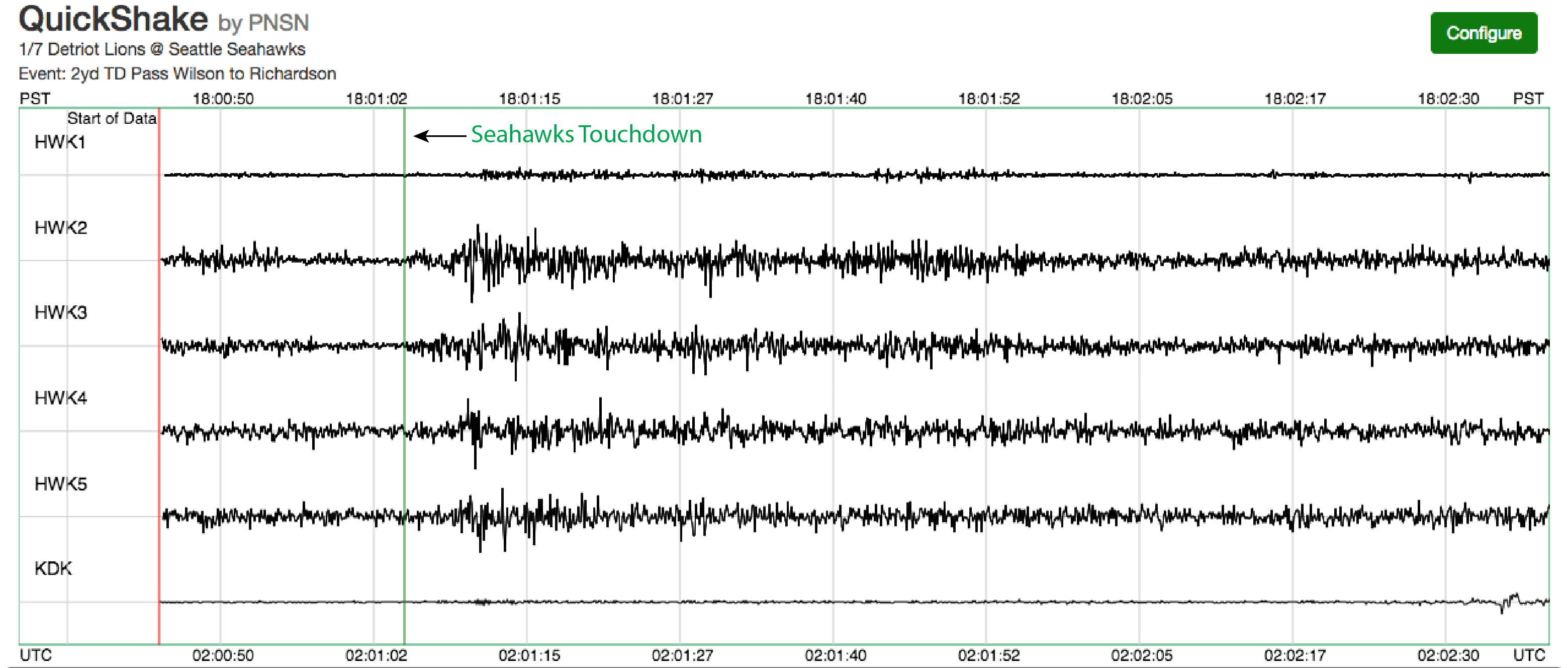By David Jacobson, Temblor

Earthquakes are unpredictable. At this stage, as much as we would like to be able to say when the next big one will happen, we do not have the understanding, technology, or capability to predict earthquakes. Additionally, we don’t know how our systems will hold up following an event. Having said that, on several Sundays from September through at least December, at 800 Occidental Ave S in Seattle, Washington, seismic activity is predictable.
The Seattle Seahawks are known for having one of the loudest and most raucous crowds in the NFL. At one point, the noise level reached 137.6 decibels, which is louder than a jet engine. However, Seahawks fans are also known for creating small earthquakes.
On January 8, 2011, on a 67 yard touchdown run by Marshawn Lynch, the combination of fans jumping, stands reverberating, and ground vibrating was enough to set off a local seismometer, which registered the shaking as a M=2 earthquake. While not substantial, this truly was a man-made earthquake.

Ever since that, the Pacific Northwest Seismic Network (PNSN) has occasionally worked with the Seahawks to set up seismometers to register these “fanquakes.” This most recently happened last Saturday (January 7) when the Seahawks played the Detroit Lions in a playoff game. By setting up seven seismometers around the stadium, various readings could be monitored, and shown live on quickshake.pnsn.org to anyone that wanted to watch.

Throughout the game, whenever there was a big play or the Seahawks scored a touchdown, it was clearly visible in the waveforms the seismometers produce. For example, the figure below shows the waveforms right before, and after a Seahawks touchdown.

While none of the seismic activity reached the M=2 earthquake recorded in 2011, setting up seismometers around the stadium provides the PNSN not only the opportunity to have fun, but test equipment and software that could be used on a much larger and more important scale. As this operation has become more popular, the scientists at the PNSN have started running their software in a virtual cloud to handle the influx of viewers. Being able to see that they are still able to send out results despite having over many viewers is vital, since delivering information following a real earthquake will be crucial. Additionally, PNSN director John Vidale said that these types of alerts are related to the earthquake early warning system being built. So, for the sake of public safety, and science, let’s hope that these “fanquakes” keep happening.
Sources
Pacific Northwest Seismic Network (PNSN)
LiveScience
Sports Illustrated
- Structures can be both earthquake-resilient and sustainable - July 19, 2024
- Earthquakes rattle Palawan, Philippines: Is the region as stable as we thought? - July 3, 2024
- Seismic retrofit rates highlight inequitable efforts - June 20, 2024
